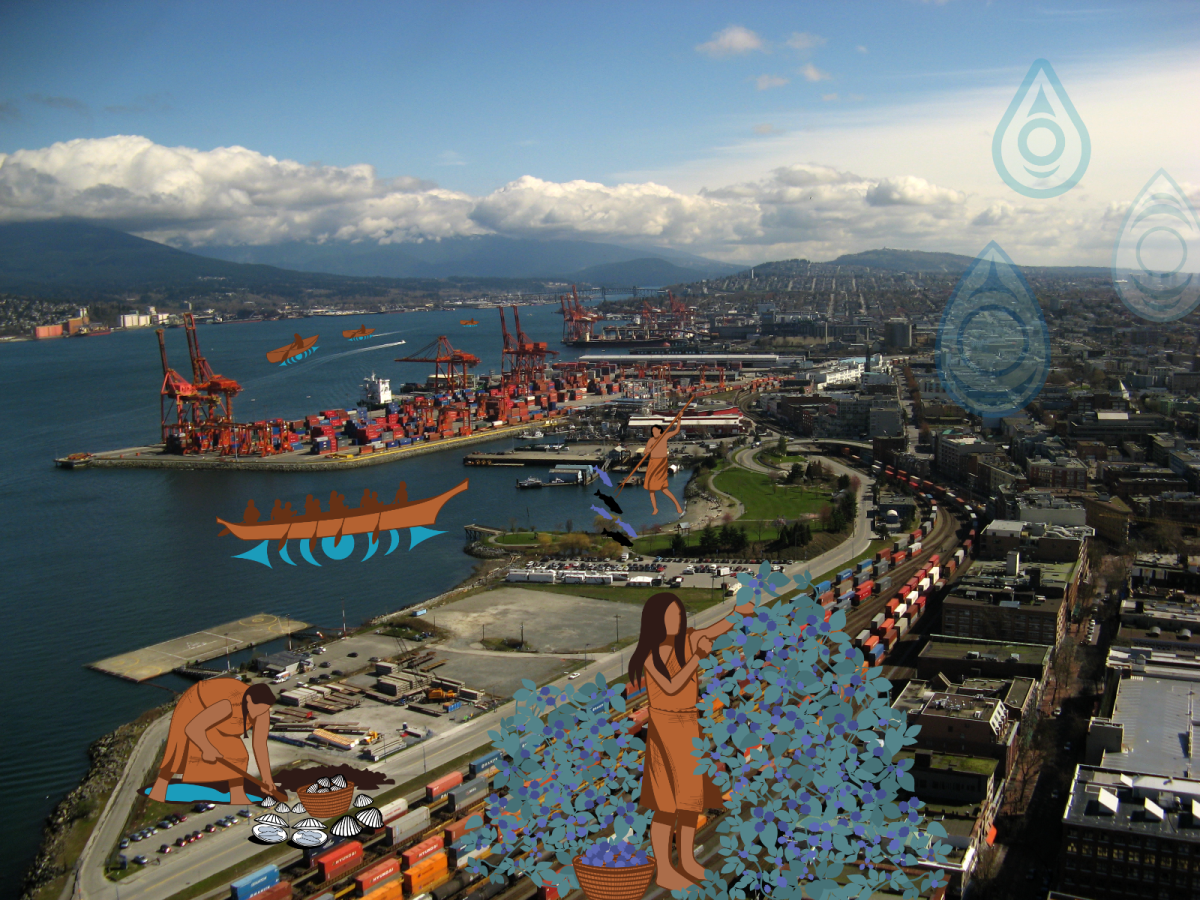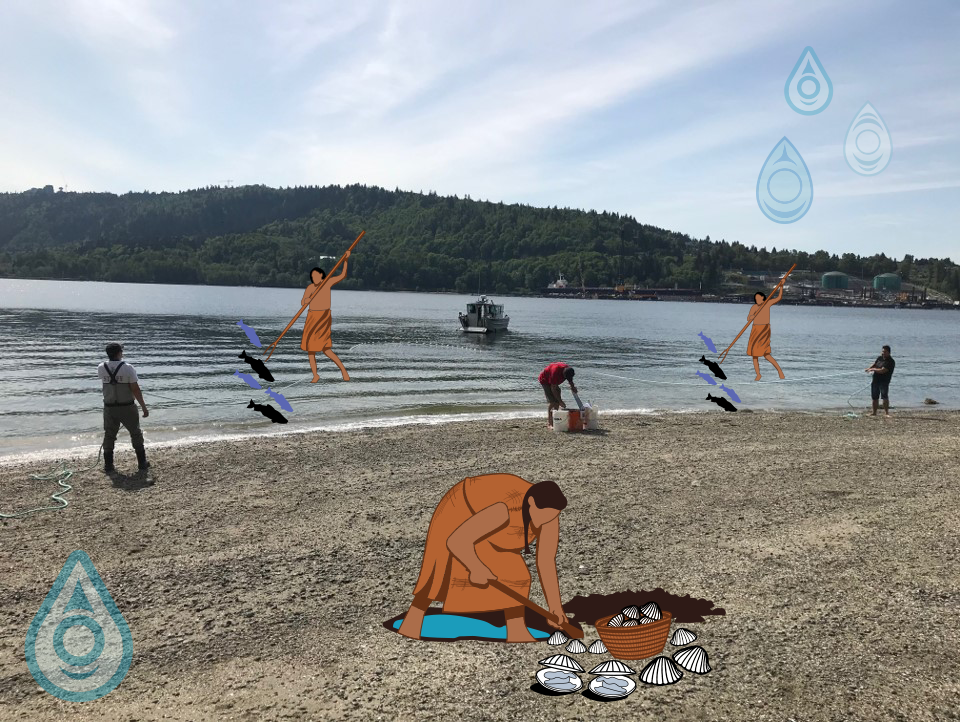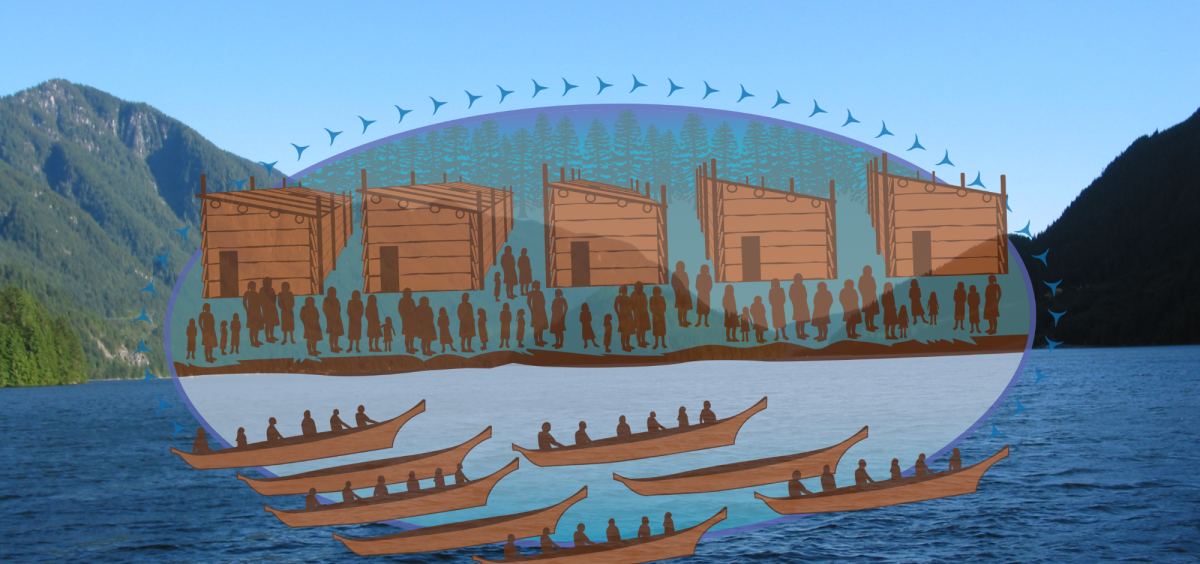“This little corner of the world often is in the top five — sometimes number one — for best place to live, yet we’re pumping sewage into our waterways,” Gabriel George said.

səlilwət, now commonly known as the Burrard Inlet, has been home to the Tsleil-Waututh people for centuries but with the industrialization and urbanization that came with contact, the waterways and shorelines have changed drastically; they’ve become polluted and have altered the way the nation interacts with the land.
“The cumulative impacts have been really disastrous to our way of life,” said George, director of treaty, lands and resources department with Tsleil-Waututh Nation. “Back in the late ’90s, we couldn’t do some of our ceremonies in our streams here because they were so contaminated.
“səlilwət is more than a dream habitat for salmon, which is vital to our people and to other species — it’s also a spiritual place.”
səlilwətaɬ (Tsleil-Waututh Nation) has been working for years to revitalize and protect the inlet and its surrounding areas. Recently they launched a story map, Restoring a Healthy Inlet, in hopes of engaging the community in protecting it while highlighting a misunderstood impact to the inlet: urban runoff.
For Tsleil-Waututh people, George explains, Burrard Inlet is “our grandmother, our womb, it’s our first mother.” The inlet is something Tsleil-Waututh people have a deep attachment to.
For thousands of years, the Burrard Inlet and surrounding area sustained Tsleil-Waututh people.
“səlilwət was our economy, our food, our everything, our whole life,” George said.
“And within 200 years of contact it was almost completely wiped out — I think we lost over 1,200 hectares of shoreline, which is about half the shoreline, lost through industrialization and urbanization.”
The community knows its territory better than anyone else as original stewards of the land.
“We felt the story map project was very important,” George said. “To show that we can all contribute a little bit, and in doing so we’re going to help the inlet.”
The story map explains Tsleil-Waututh’s relationship with the area over time, how industrialization and urbanization have had a negative impact on the lands and waterways and how Vancouverites and others across the Lower Mainland can contribute by doing things like using eco-friendly household products, installing rain barrels and picking up pet waste.
“It models our way of communicating and teaching and talking,” George said. “We want to empower people to feel like they can make a difference.”
Anu Rao is a senior environmental specialist with the nation who focuses on marine ecosystems. Her work has been looking at what’s in the inlet, how it’s getting there and how səlilwət can be protected to uphold the values Tsleil-Waututh has for it while ensuring the community can harvest shellfish again.
“One of the biggest sources of contamination and most poorly understood sources of contamination into the inlet is runoff from urban and industrial areas,” Rao said. “It’s poorly understood, it’s poorly managed.“
“We all have a part to play — very few people know that anything that goes into a storm drain goes either directly or eventually into the ocean.”
George said there are around 28 sewage lines that run into the inlet and more than 700 contaminants.
“It’s a big problem, a big issue but there are things we can do to manage it at the household and systemic level,” George said. “There are way better practices to managing sewage, to managing stormwater that exist.
“Our natural resource technicians are just one part, they’re out there monitoring the water quality, keeping an eye on the inlet and helping to restore it — we’re in this together and the end goal has to be restoring the environment.”
All the work leading up to the story map has been happening for generations, and involved years of data crunching for numbers and mapping.
“What we do is very solutions-focused,” Rao said. “Instead of just leaving a problem out there as a problem, we bring answers or ideas to people because then there’s something they can do about it.“
“Environmental issues can be (overwhelming),” George adds. “How can we fix this mess? Well, we can by doing our part.“
Looking for more Indigenous news? Find our stories here.







Comments